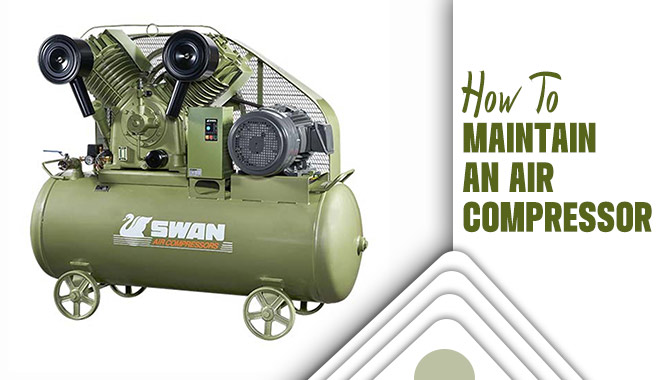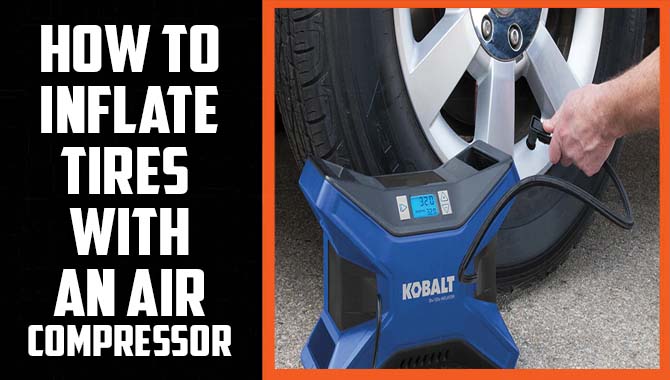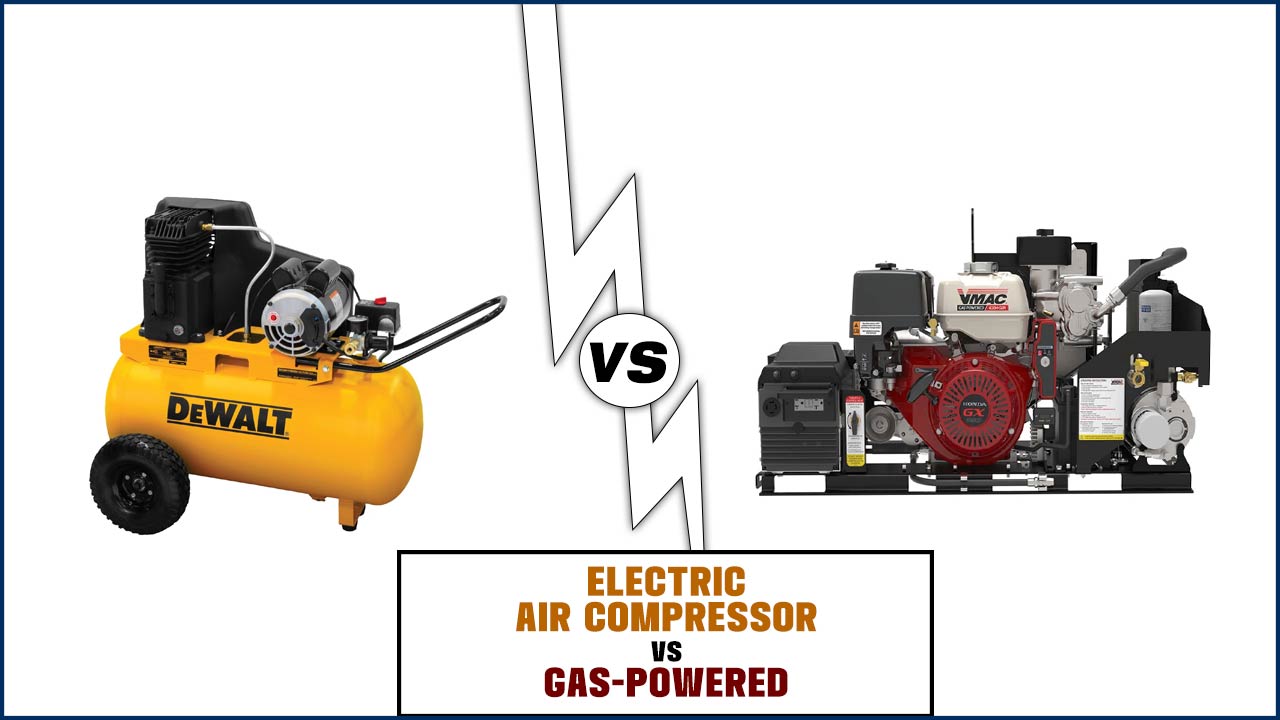Air compressors are versatile tools for various tasks, including cleaning. That said, using an air compressor for cleaning can be risky if you’re unfamiliar with the process, and knowing how to use it safely and effectively is essential.
In this comprehensive guide, we’ll walk you through everything you need to know about using an air compressor for cleaning, from selecting the right nozzle to ensuring proper safety precautions.
We’ll cover all the critical aspects of air compressor cleaning, including the different types of nozzles available, the ideal air pressure for cleaning other surfaces, and how to maintain your air compressor for optimal performance properly. You’ll also learn about the various applications of air compressor cleaning, from blasting away dirt and debris to removing paint and rust from surfaces.
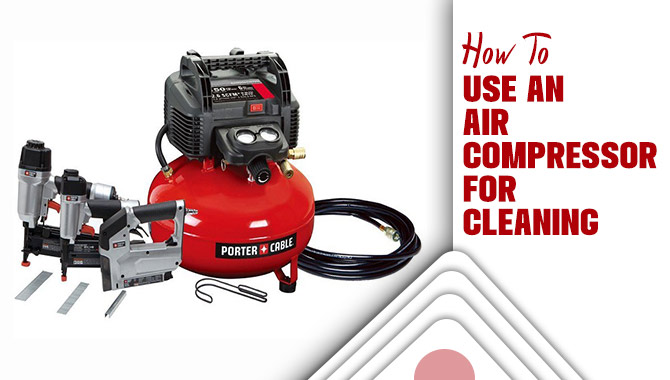
How To Use An Air Compressor For Cleaning – Steps By Steps Guide
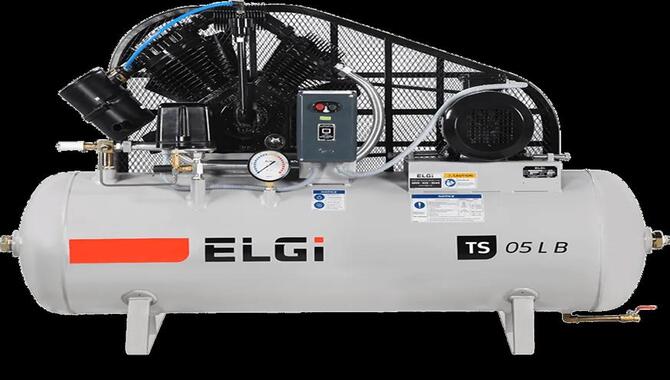
Using an air compressor for cleaning can be efficient and effective, but following proper guidelines is important to ensure safety and prevent damage. Here are step-by-step instructions on how to use an air compressor for cleaning, along with some “what not to do” tips:
1. Safety First
- Read the instruction manual: Familiarize yourself with your specific air compressor model and understand its safety features and limitations.
- Wear safety gear: Wear goggles, gloves, and hearing protection to protect yourself from debris and excessive noise.
- Check the compressor: Inspect the air compressor for visible damage or leaks. Ensure it’s properly grounded and connected to a power source.
2. Set Up The Workspace
- Choose a well-ventilated area: Work in a space with good airflow to prevent the accumulation of fumes or airborne particles.
- Clear the area: Remove any objects or debris that could be blown around by the compressed air, causing damage or injury.
- Secure loose items: Tie back long hair, remove loose clothing or jewelry, and secure any items caught in the air stream.
3. Connect The Air Compressor
- Attach the air hose: Connect one end to the air compressor outlet port and tighten it securely.
- Attach the cleaning tool: Depending on the cleaning task, attach the appropriate nozzle or attachment to the other end of the air hose.
4. Use The Air Compressor To Clean
- Start the compressor: Turn on the air compressor and allow it to build up the necessary pressure. Refer to the instruction manual for the recommended pressure range.
- Begin cleaning: Hold the cleaning tool securely and direct the airflow onto the surface you want to clean. Maintain a safe distance to avoid causing damage or injury.
- Use short bursts: Avoid continuously spraying compressed air for an extended period. Use short bursts to prevent air compressor overheating and control the air pressure.
Choosing The Right Air Compressor For Cleaning
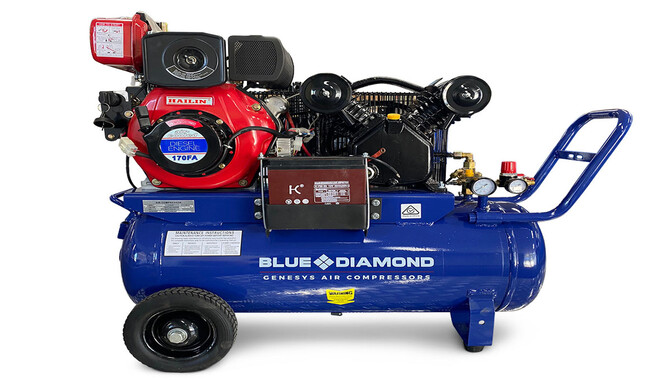
Choosing a suitable air compressor for cleaning is crucial to ensure the job is done efficiently and effectively. The first step in selecting the appropriate air compressor is determining the air pressure required for the cleaning task.
This will depend on the nature of the cleaning job, whether it involves dusting, blowing, or drying. For example, a higher air pressure will require cleaning industrial equipment than a residential space. The second factor to consider is the type of air compressor suitable for the job.
Different compressors are available, including reciprocating compressors, rotary screw compressors, and centrifugal compressors. Reciprocating compressors are ideal for small-scale cleaning tasks, while rotary screw compressors are recommended for continuous cleaning jobs that require higher air pressure.
Centrifugal compressors are better suited for large-scale cleaning tasks that require high volumes of compressed air.
Safety Precautions For Using An Air Compressor For Cleaning
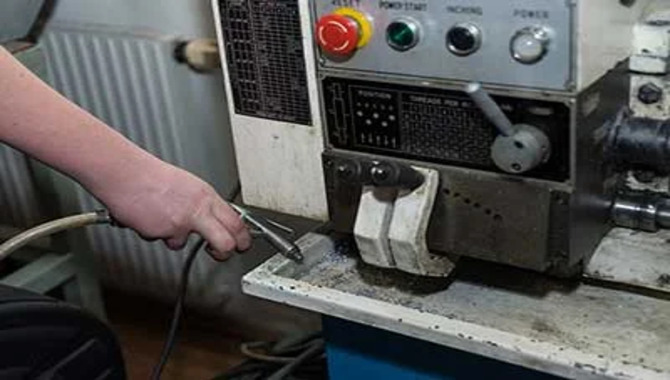
Using an air compressor for cleaning can be a convenient and efficient way to remove debris, dust, and dirt from your workspace. However, taking proper safety precautions is crucial to prevent accidents or injuries.
- Wear protective gear such as safety glasses and gloves. And earplugs are essential to protect your eyes, hands, and ears from flying debris or loud noise.
- ensure that the air compressor is placed on a stable surface and that all its connections are secure and tight to avoid leaks or malfunctions.
- never point the air compressor nozzle towards yourself or anyone else, as the high-pressure air can cause severe harm or even death. Additionally, be cautious of any electrical cords or power sources when using the air compressor. And always switch it off before making any adjustments or repairs.
- read and follow the manufacturer’s instructions carefully and regularly inspect the air compressor for any signs of wear or damage.
Tips For Efficient And Effective Cleaning With An Air Compressor
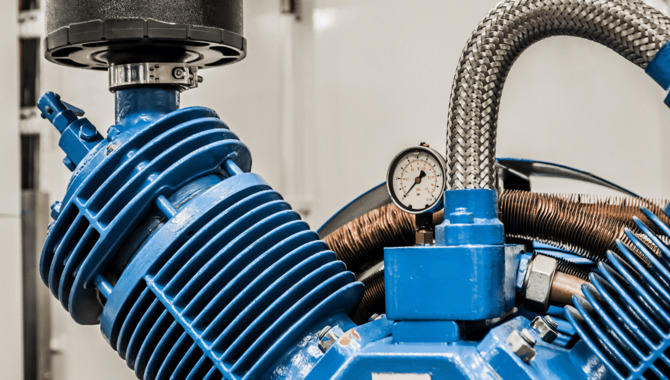
One must know some efficient and effective cleaning tips when cleaning with an air compressor.
- make sure to use the correct nozzle attachment for the job. A narrow nozzle is excellent for getting into tight spaces, while a wider nozzle is better for larger surfaces.
- adjust the pressure of the air compressor to suit the cleaning task at hand. Too much stress can damage delicate surfaces, while too little pressure won’t effectively remove dirt and debris. It’s also essential to wear protective gear, such as safety glasses and earplugs, to prevent injury from flying debris and loud noise. When cleaning with an air compressor, start from the top and work your way down to avoid pushing dirt and debris onto already-cleaned areas.
- regularly clean and maintain your air compressor to prolong its life and ensure efficiency.
Maintenance And Upkeep Of Your Air Compressor
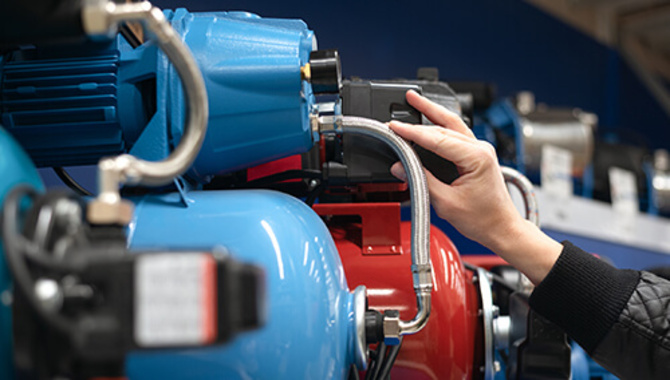
The maintenance and upkeep of your air compressor are critical in keeping it functioning efficiently and effectively. Neglecting to perform regular maintenance tasks can lead to the deterioration of your compressor and result in costly repairs or replacement.
To maintain your air compressor, following the manufacturer’s guidelines for servicing, including regular oil changes, filter replacements, and inspection of belts and hoses, is essential. Additionally, you should ensure that your compressor’s environment remains clean and debris-free, as this can lead to clogs and other issues.
Monitoring the compressor’s pressure levels regularly and adjusting them as needed is crucial to avoid overloading the system. Finally, investing in quality parts and components for your air compressor can also help prolong its lifespan and minimize the need for repairs.
Proper maintenance and upkeep of your air compressor are essential in ensuring maximum efficiency, reducing the risk of breakdowns, and ultimately saving you time and money in the long run.
Conclusion
utilizing an air compressor for cleaning can be efficient and cost-effective. However, handling the equipment carefully and maintaining safety precautions is crucial to avoid potential hazards or injury. Users can ensure a successful and safe cleaning process by following the steps and guidelines discussed in this comprehensive guide.
It is recommended to thoroughly understand and adhere to the manufacturer’s instructions before operating the air compressor. With proper training, adequate knowledge, and safety measures, air compressors can be valuable for cleaning in various industries and household settings.
FAQs
1.What Safety Precautions Must I Follow While Using An Air Compressor For Cleaning?
Ans: Some safety precautions to follow while using an air compressor for cleaning include wearing safety glasses and hearing protection, ensuring proper ventilation, using the correct type of nozzle, avoiding pointing the nozzle at people or animals, and adequately grounding the compressor to prevent electrical shock.
It is also essential to follow the manufacturer’s instructions and to properly maintain and inspect the compressor before use.
2.What Are The Maintenance Tips For Keeping My Air Compressor In Good Condition, And How Often Should I Clean It?
Ans:
- Check the oil level and change it regularly according to the manufacturer’s instructions.
- Keep the air filter clean and replace it if necessary.
- Drain the moisture from the tank regularly to prevent rust and corrosion.
- Check the belts for cracks or wear and replace them if necessary.
- Tighten any loose bolts or fittings.
3.Are There Any Specific Cleaning Products Or Chemicals I Should Avoid Using With An Air Compressor, And Why?
Ans: Yes, specific cleaning products or chemicals should avoid when using an air compressor. These include solvents, bleach, ammonia, and other strong chemicals that can react with the compressor’s components, causing damage or even explosions. It is essential always to use cleaning products that the air compressor manufacturer recommends.
4.What Are The Necessary Safety Precautions When Using An Air Compressor For Cleaning?
Ans: Some necessary safety precautions to take when using an air compressor for cleaning are:
- Wear appropriate safety gear, including eye protection, hearing protection, and gloves.
- Ensure the air compressor is properly grounded and the electrical connections are secure.
- Check the hoses and connections for any damage or leaks before use.
5.What Type Of Air Compressor Best Suits Cleaning Tasks, And What Features Should I Look For When Selecting One?
Ans: A portable, oil-free, high-pressure air compressor is best suited for cleaning tasks. When selecting an air compressor, you should look for features such as a high CFM (cubic feet per minute) rating, a tank capacity that meets your needs, and a motor with sufficient horsepower.


